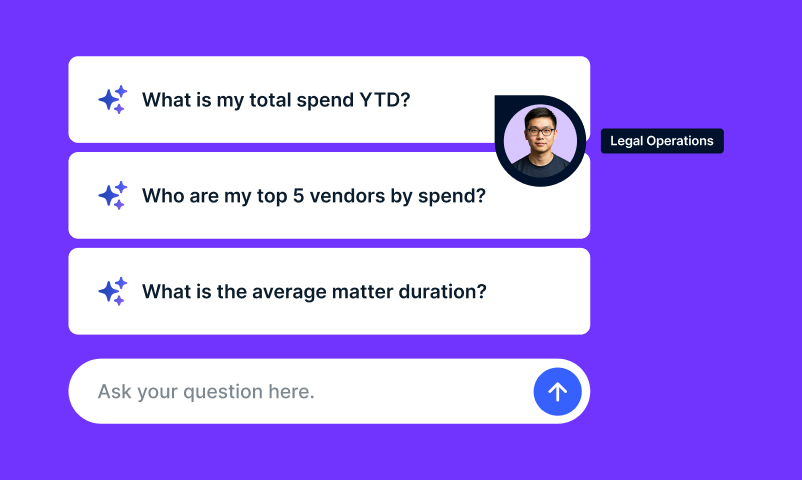Legal operations tools were supposed to simplify your work. Instead, they’ve multiplied it.
Most legal departments today are buried in disconnected systems: one for intake, another for invoice review, and even more just to get a clear report. The result? A tech stack that creates more problems than it solves, and a legal ops team stuck managing chaos instead of driving strategy.
Tasks are repeated. Workflows get bottlenecked. Spend slips through the cracks. And while your tech promises to do more, your team ends up doing the heavy lifting.
But never fear, change is here. The latest generation of legal tech — like Onit ELM — is smarter, faster, and actually works the way legal teams do. This is your chance to reboot.
Here’s how to evaluate what’s worth keeping, what’s holding you back, and what your legal operations tools should actually deliver.
Why Legal Tech Feels Broken (Even If It’s “Modern”)
What’s marketed as innovation often turns out to be a fresh coat of paint on the same legacy platform. Or worse: a tool that “uses AI” but still asks you to forward invoices to a shared inbox (booo!).
The brutal truth? Many legal ops teams are working harder just to keep their tech stack afloat. But often, they’re just getting buried under more work.
When your legal software becomes yet another system to navigate, rather than a tool that actually supports how your team works, it’s not helping. It’s slowing you down.
And that’s not modernization; that’s just maintenance and more work.

Why Legal Operation Tools Matter More Than Ever
Legal operations has moved from reactive service provider to proactive business partner, and expectations are rising. You’re being asked to control costs, forecast accurately, streamline intake, prove value, and do it all with limited resources.
You can’t meet that mandate with a disconnected set of point solutions. You need legal operations tools that are cohesive, intelligent, and action oriented. Your tech stack isn’t just supporting legal operations anymore. It defines what your department can achieve.
And the gap between the teams who have the right tools — and the ones who don’t — is only going to widen.
What Today’s Legal Ops Tools Should Actually Do
To move your legal team forward, your tools need to do more than plug gaps. They need to remove them entirely. Whether you’re managing matters, invoices, or workflows, here’s how a truly world-class platform can help.
1. Streamline Legal Spend Management and Invoicing
Tracking spend isn’t enough. Today’s tools should help you control it.
That means smarter automation, like flagging billing violations before they hit your desk. AI bill review should be baked into the platform, not added through a third party. You should be able to see which vendors are overspending, which departments are trending high, and where your money is going – without digging through PDFs or spreadsheets.
If your legal spend data lives in silos or static reports, you’re not just lacking insight. You’re losing leverage.
2. Activate AI That Actually Works for Legal
AI shouldn’t just generate summaries. You deserve AI that actually delivers results.
Legal operations tools that claim AI functionality need to do more than slap a chatbot into the corner of your screen. They should automate approval workflows, intelligently triage legal intake, and reduce manual touchpoints that drain your time.
The best AI doesn’t just respond. It anticipates and learns. It works in the background to keep things moving, so your team can focus on legal strategy (not software babysitting).
And if your current tools can’t evolve , it might be time to look for a new partner that can.

3. Automate Legal Workflow (Without the Extra Work or Headaches)
Legal operations professionals are no strangers to bottlenecks. New requests come in through Slack, email, shared folders, and more. Most of it still ends up relying on manual routing.
It doesn’t have to be this way. The right workflow engine should centralize intake, automatically assign tasks based on priority or matter type, and give full visibility into what’s moving and what’s stuck.
Workflow automation isn’t about adding layers of logic. It’s about removing friction. If your current tech still makes you manage work around the system, it’s not working hard enough for you.
4. Deliver Analytics Built for Legal Ops
Your team is already overloaded. The last thing you need is another dashboard to keep track of. You need answers… fast.
A legal operations platform should give you real-time visibility into the health of your matters, your spend, vendor performance, and internal resourcing. Reporting shouldn’t take days. It should take a few clicks, and it should tell you something useful.
If your system can’t explain where your time and money are going, or which firms are helping you hit KPIs, is it even a reporting tool? No, it’s a mirror.

Time for a Tech Stack Reality Check?
Legal ops teams are being asked to deliver more value with less margin for error. But if your legal tech is still clunky and disconnected, it’s undermining your mission instead of supporting it.
The gap between expectation and execution is where your tech stack lives. And if you’re constantly working around the limitations of your tools, you’re definitely not being set up to lead.
Rebooting your legal tech stack isn’t about chasing trends. It’s about reclaiming control. On your terms.
Ready to Really Evaluate Your Legal Ops Tech?
Download Onit’s AI Buyer’s Guide to get the goods on what to look for. This is a practical resource built for legal operations teams who want clarity.
The guide walks you through the real questions that matter:
- Are your tools actually AI-capable, or just AI-labeled?
- Is your spend management workflow helping you control costs or just documenting them?
- Can your platform scale with your needs, or are you building on top of duct tape?
You’ll get a clear framework to assess what you have today, identify what’s missing, and understand what to look for in your next legal tech investment. It’s helpful whether you’re upgrading one piece or rethinking your entire stack.
If your current tools are costing you more time than they save, the AI Buyer’s Guide will help you spot the signs early and move forward with confidence.




